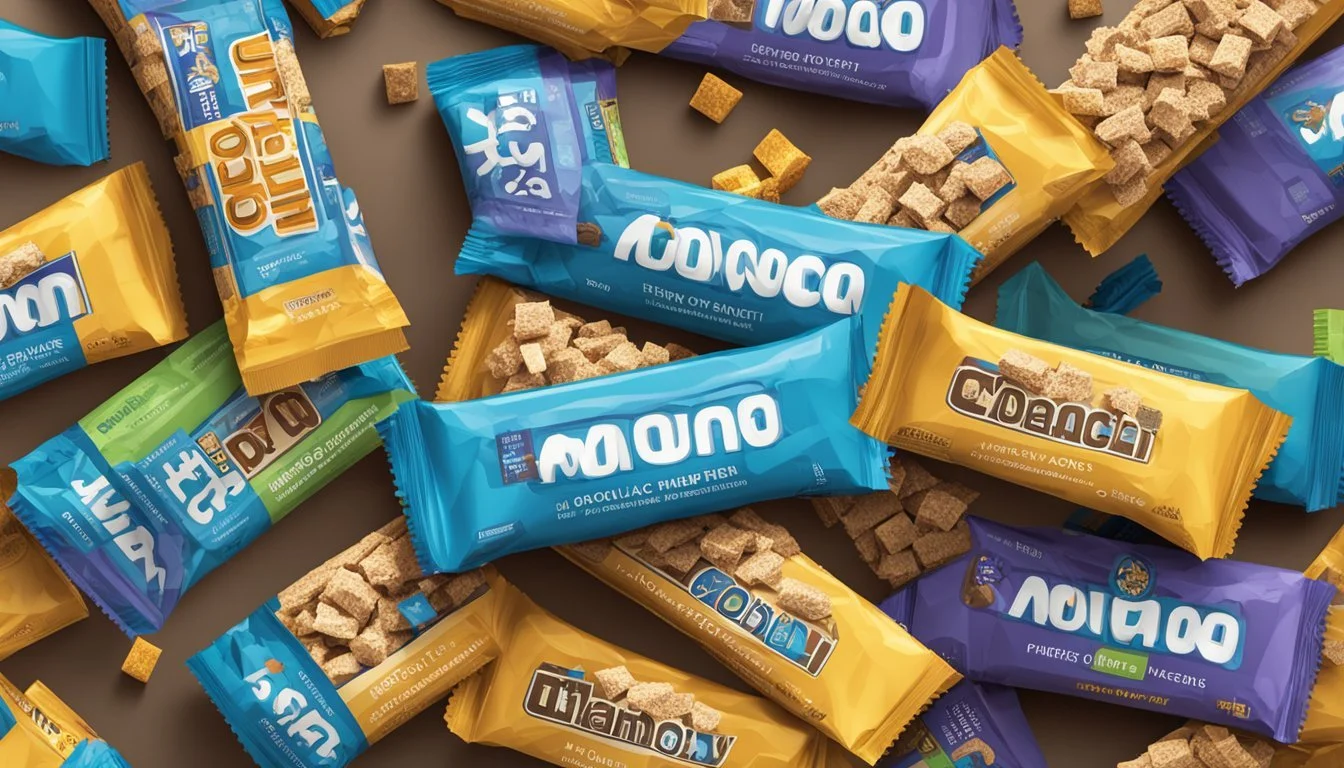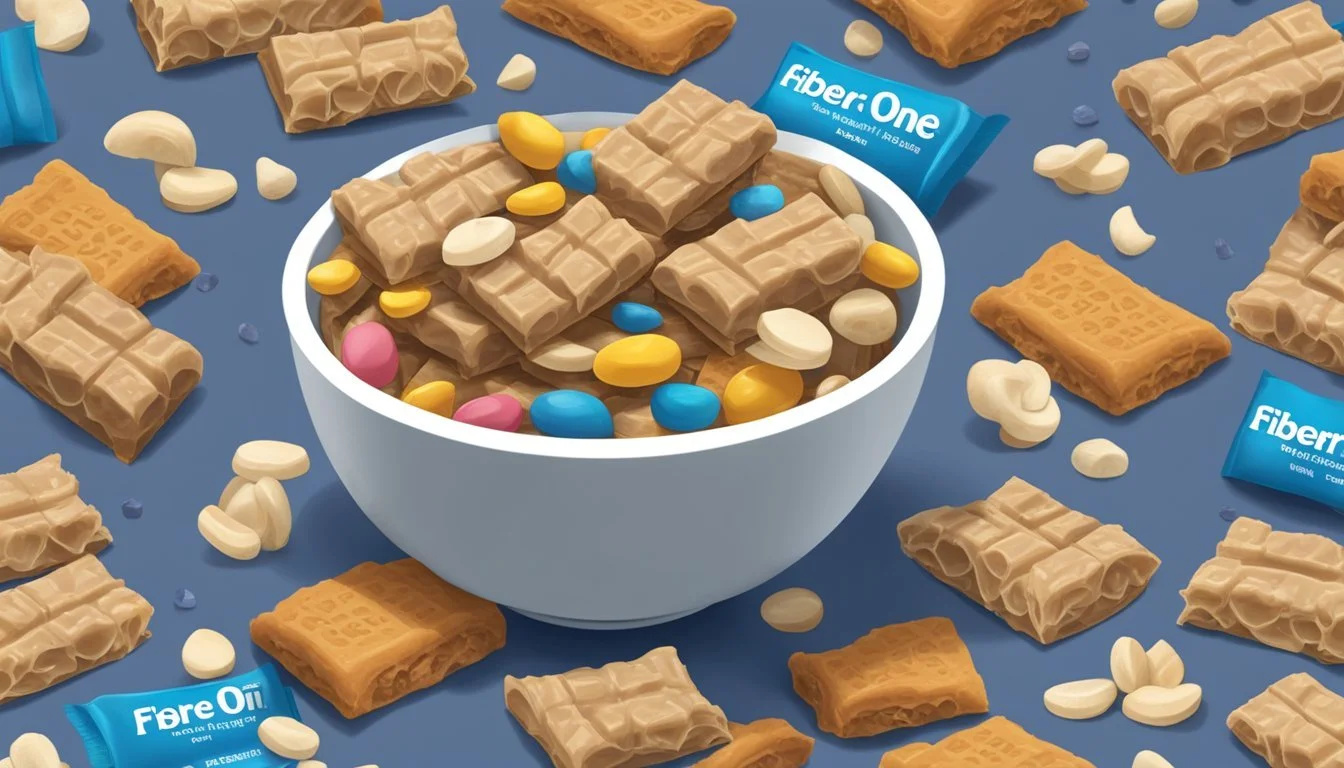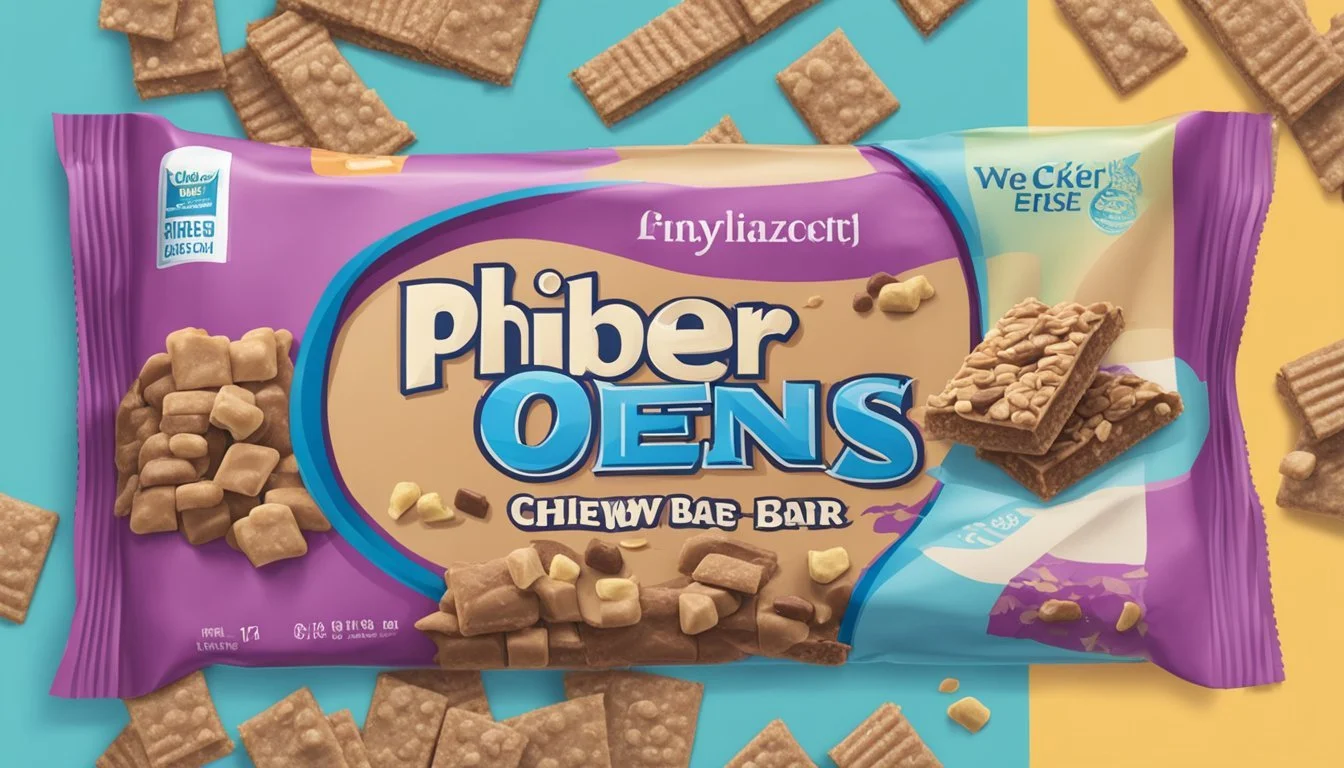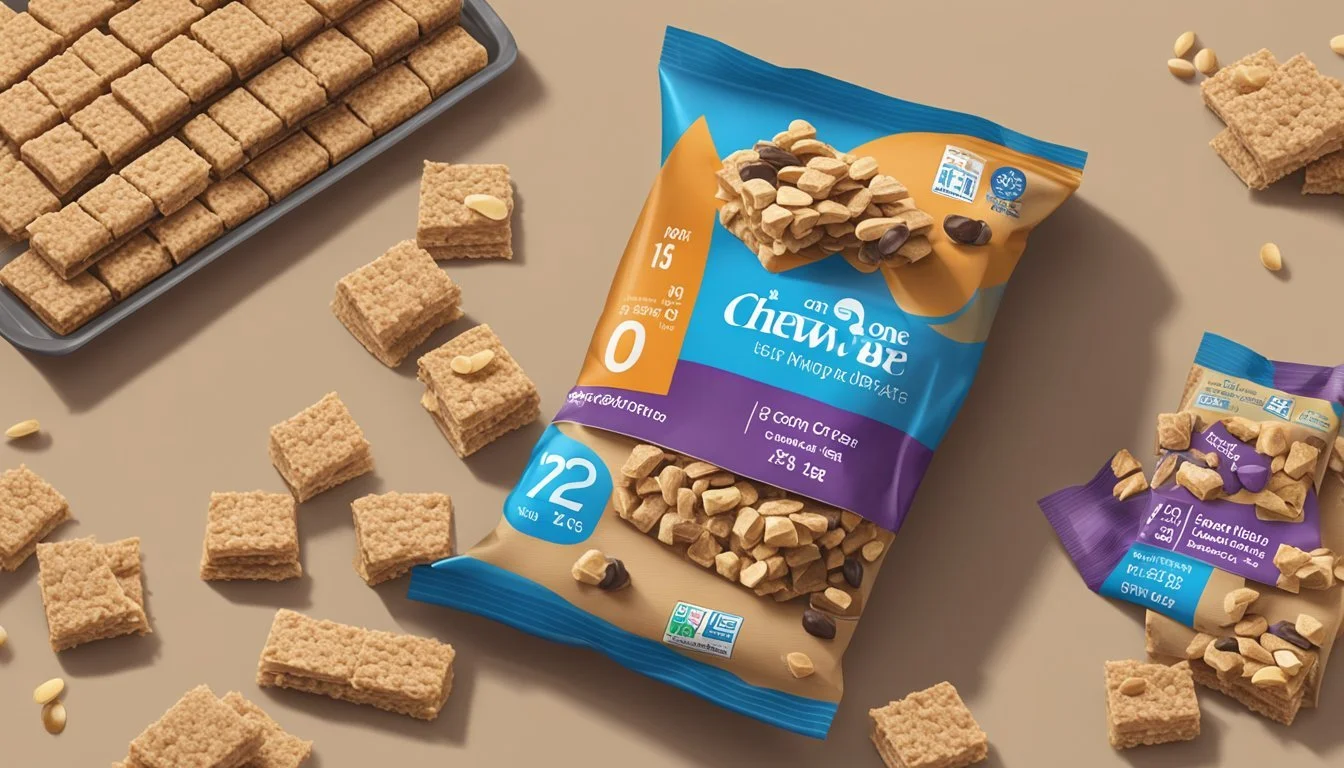How Many Servings of Fiber One Chewy Bars Is Too Much
Expert Guidelines
Understanding how many Fiber One Chewy Bars are too much is crucial for anyone looking to maintain a balanced diet. Fiber One Bars, known for their high fiber content, can provide numerous health benefits such as regulating bowel movements, stabilizing blood sugar levels, and keeping you full between meals. However, consuming too many of these bars can lead to digestive issues. Typically, eating more than two Fiber One Chewy Bars in a day can cause discomfort, including bloating, gas, and potentially diarrhea.
Incorporating Fiber One Bars into your diet wisely can ensure that you reap their nutritional benefits without experiencing negative side effects. Each bar contains about 6 grams of fiber, which contributes significantly to the recommended daily fiber intake. Yet, it's important to balance these bars with other fiber sources and overall healthy food choices to avoid overloading your digestive system with fiber. When included in moderation, these bars can be a convenient and tasty addition to your diet.
For those particularly sensitive to high-fiber foods, it's advisable to start with just one bar and observe any digestive changes. The goal is to enhance your nutrition and health without compromising comfort. Adjusting the number of bars consumed according to your body's response can help maintain digestive health and ensure you're getting the most out of your fiber intake.
Understanding Dietary Fiber
Dietary fiber plays a crucial role in maintaining several aspects of health, including digestion and cardiovascular wellness. Different types of fiber have specific benefits and knowing the recommended intake is essential for optimal health.
Role of Fiber in Health
Fiber is an essential nutrient that significantly impacts digestive health and overall wellness. It aids in maintaining regular bowel movements and helps prevent constipation.
Soluble fiber, found in fruits, vegetables, grains, and beans, can help control blood sugar levels and lower cholesterol. Insoluble fiber, present in nuts, seeds, and whole grains, aids in moving food through the digestive system efficiently.
Moreover, adequate fiber intake is associated with a reduced risk of developing various conditions, such as heart disease, type 2 diabetes, and colorectal cancer.
Types of Fiber
Soluble Fiber: This type of fiber dissolves in water to form a gel-like substance. It is found in foods such as oats, apples, beans, and lentils. Soluble fiber is most beneficial for lowering cholesterol and regulating blood sugar levels.
Insoluble Fiber: Insoluble fiber does not dissolve in water and adds bulk to the stool, which aids in passing food through the digestive tract. Foods like whole grains, nuts, and seeds are rich in insoluble fiber.
Combining both types of fiber in the diet is essential for achieving the best health outcomes, as they work together to improve various aspects of health.
Recommended Daily Intake of Fiber
The Recommended Daily Intake (RDI) for dietary fiber varies by age and sex. For adults, the RDI is typically around 25 grams per day for women and 38 grams per day for men.
To meet these recommendations, it is important to consume a variety of fiber-rich foods, including fruits, vegetables, whole grains, beans, nuts, and seeds.
Tracking daily fiber intake can help ensure that individuals do not fall short of these important nutritional targets. Regularly incorporating different sources of fiber can provide balanced benefits to support a healthy lifestyle.
Nutritional Profile of Fiber One Bars
Fiber One bars are popular for their high fiber content, making them a go-to snack for many. This section provides a comprehensive look at their essential nutritional components.
Caloric Content and Serving Size
A typical Fiber One bar ranges from 90 to 150 calories per serving. The variation depends on the flavor. For example, the Chocolate Peanut Butter flavor contains 90 calories, while others like Oats & Chocolate can reach up to 150 calories.
Despite being low in calories, these bars still provide a satisfying snack option. They strike a balance between low-calorie content and high fiber, making them appealing to those watching their weight.
Macronutrients and Fiber Content
Fiber One bars offer a macronutrient composition dominated by carbohydrates, which make up around 72% of the total calories. Protein and fat content are relatively low, with protein often contributing 1-5 grams per bar and fat typically around 2-4 grams.
Breakdown of Macronutrients:
Carbohydrates: 17-27 grams
Protein: 1-5 grams
Fat: 2-4.5 grams
These bars are particularly noted for their high fiber content. One serving can provide about 18% of the recommended daily value, which translates to roughly 5 grams of fiber.
Added Ingredients and Sweeteners
Fiber One bars contain several added ingredients and sweeteners to enhance flavor and texture. Common components include corn syrup, sugar, and natural flavors. Some flavors feature added chocolate or caramel.
Key Sweeteners:
Corn Syrup
Sugar
Natural Flavors
These ingredients contribute to the overall palatability of the bars but add to the sugar content, which usually stands at about 4-5 grams per bar.
The inclusion of natural flavors helps improve taste but is formulated in a lab, often kept as trade secrets. The combination of these ingredients allows Fiber One bars to maintain a balanced taste profile while delivering essential nutrients.
Benefits and Limits of Processed Fiber
Processed fiber, like that found in Fiber One bars, offers convenience and specific health benefits. However, it's important to understand how it differs from natural fiber and recognize the potential health risks associated with consuming too much.
Differences Between Natural and Added Fiber
Natural fiber comes from whole grains, fruits, vegetables, nuts, and seeds. It supports proper digestion and maintains gut health by promoting regular bowel movements.
Added fiber, such as chicory root extract in Fiber One bars, supplements dietary fiber intake. It can help with constipation and improve digestion short-term.
Yet, extensive reliance on processed fiber can miss out on the additional nutrients found in whole foods, like vitamins, minerals, and antioxidants.
How Much Is Too Much
While Fiber One bars provide a convenient source of dietary fiber, moderation is key. Each bar contains about 6 grams of fiber.
Adult males are recommended to consume around 38 grams of fiber daily, while adult females need around 25 grams. Exceeding 50 grams per day, especially from processed sources, may lead to adverse effects.
Balancing intake with whole grain oats, bran, and other natural sources can ensure comprehensive nutrition.
Potential Health Risks
Overconsumption of processed fiber can cause issues like bloating, gas, and discomfort. While Fiber One bars help stabilize blood sugar levels, their high sugar content could be problematic for individuals managing diabetes.
Additionally, some processed fibers like inulin might upset sensitive stomachs. A reliance on such bars over whole food sources can also lead to missed essential nutrients.
In sum, while processed fibers present in Fiber One bars can complement dietary fiber intake, they should not replace the benefits provided by natural sources. Balancing both ensures a healthier, more holistic diet.
Impact of Excessive Fiber Consumption
Consuming excessive fiber can lead to various digestive complications and impede nutrient absorption, with both immediate and long-term effects. Understanding these impacts is essential for managing daily fiber intake effectively.
Gastrointestinal Discomfort
Excessive fiber intake can lead to gastrointestinal discomfort, including symptoms like bloating, gas, abdominal pain, and constipation. These issues arise because high fiber levels increase stool bulk, making it harder to pass and potentially causing irritable bowel syndrome (IBS) flare-ups.
Drinking insufficient water can worsen these symptoms, as fiber needs fluid to move smoothly through the digestive system. To alleviate discomfort, individuals should increase water consumption and avoid consuming fiber-rich foods in large quantities.
Long-Term Health Implications
Overconsumption of fiber may lead to more serious issues like nutrient deficiencies and bowel obstruction. A phytobezoar, an intestinal blockage formed from accumulated fiber, can obstruct digestion and nutrient absorption, leading to weight changes and nausea.
Long-term excessive fiber can interfere with the absorption of essential nutrients like iron, calcium, and zinc, potentially leading to deficiencies. This underscores the importance of maintaining a balanced diet and not exceeding the recommended daily intake (RDI) of fiber.
Balancing Fiber Intake
Balancing fiber intake involves aiming for the recommended daily values: 25 grams for women and 38 grams for men. Exceeding these amounts frequently can induce the uncomfortable and serious issues mentioned.
It’s important to integrate a variety of fiber sources gradually to avoid sudden increases that the body can't handle. Foods like fruits, vegetables, and whole grains provide adequate fiber without overwhelming the digestive system. For relief from fiber-induced symptoms, increasing water intake, engaging in light physical activity, and temporarily reducing high-fiber foods can be effective.
To manage fiber intake, individuals should monitor their diet closely and adjust consumption based on their body's responses. Consulting with a healthcare provider can also provide personalized advice to ensure fiber intake supports overall health.
Diet Considerations for Different Demographics
Addressing dietary fiber intake is crucial for promoting overall health, managing various health conditions, and customizing diets to fit specific needs. Different demographics require tailored approaches to fiber consumption based on age, gender, and dietary restrictions.
Fiber Needs by Age and Gender
Age and gender significantly influence fiber requirements. Children typically need less fiber compared to adults, but incorporating fiber-rich foods like fruits and vegetables is essential for their growth and digestion. Men aged 50 and younger should aim for 38 grams of fiber daily, while those older than 50 need 30 grams.
Women aged 50 and younger should consume 25 grams of fiber per day. For those over 50, the recommendation drops to 21 grams. Higher fiber intake is associated with reduced risks of health issues such as heart disease, diabetes, and type 2 diabetes. Adjusting fiber intake in response to age-related changes ensures better digestive health and disease prevention.
Customizing Fiber Intake for Dietary Restrictions
Customizing fiber intake involves accommodating various dietary restrictions including gluten-free, nut-free, and dairy-free diets. Individuals with celiac disease or gluten sensitivity should avoid wheat-based fibers and opt for gluten-free sources like quinoa, oats, and brown rice. Those with nut allergies can obtain fiber from seeds, legumes, and vegetables.
Dairy-free diets can still maintain high fiber consumption by focusing on plant-based sources. For IBS sufferers, managing fiber intake is about balancing soluble and insoluble fibers to prevent flare-ups. Soluble fibers, found in oats and fruits, can ease digestion, whereas insoluble fibers, critical for bowel health, should be moderated to prevent discomfort. Personalized fiber plans tailored to dietary restrictions can help individuals maintain optimal health.
Making Smart Choices for Healthy Snacking
In today’s busy world, picking the right snack can make a big difference in maintaining a healthy lifestyle. Selecting high-fiber snacks and understanding food labels are key components to making smarter decisions.
Selecting High-Fiber Snacks
Choosing snacks that are rich in fiber can help maintain digestive health and keep you feeling full longer. Fiber One bars are a popular option, offering flavors like Chocolate Peanut Butter and Oats & Chocolate. Each bar typically contains at least 20% of the daily fiber value, making them a convenient and tasty choice.
High-fiber snacks can include a variety of grains, nuts, legumes, and plant foods. For instance, a mix of granola bars, fruits like bananas and berries, and nuts can offer both nutrition and taste. Incorporating different flavors and textures ensures that snack time remains enjoyable without compromising health.
Understanding Food Labels
Reading food labels is essential for making informed decisions. When selecting products like Fiber One bars, it's important to note key nutritional information. Each bar generally contains 70 calories, 17 grams of carbohydrates, and 6 grams of fiber. It also provides 4 grams of protein and 4% of the daily value of iron.
Processed ingredients can often be hidden in snacks. Ingredients such as corn syrup and vegetable oils are common in bars like Fiber One. These components may contribute to the overall calorie count but also emphasize the importance of moderation. By paying attention to these details, consumers can pinpoint the healthiest options that align with their dietary goals.
Expert Opinions and Recommendations
Fiber One Chewy Bars are convenient sources of fiber, but determining the appropriate serving size involves considering nutrition, health effects, and expert guidance.
Views from Registered Dietitians
Registered dietitians emphasize the benefits of a high-fiber diet, which includes aiding digestion and stabilizing blood sugar. Fiber One Chewy Bars contain around 6 grams of fiber per serving, which is significant.
However, dietitians also highlight concerns such as sugar content and processed ingredients. The presence of corn syrup and vegetable oils can offset the health benefits. They recommend consuming these bars in moderation, generally not exceeding one to two bars per day to avoid an excessive intake of sugar and processed ingredients.
Clinical Research Insights
Clinical research often backs dietitians' views. Studies indicate that a high intake of processed sugars and saturated fats can increase risks of heart disease and certain cancers. Fiber One Chewy Bars contain around 4 grams of sugar and small amounts of saturated fat.
Experts recommend keeping total daily sugar intake within 25 grams for women and 38 grams for men. Thus, consuming more than two bars daily could contribute disproportionately to sugar levels, reducing overall nutrient balance. Researchers suggest incorporating a variety of fiber sources into the diet to maximize health benefits while minimizing potential risks.









